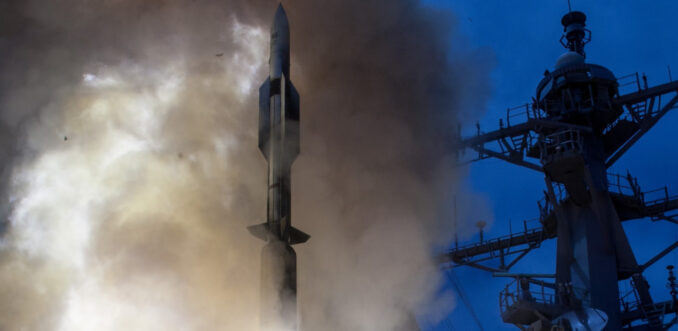Are U.S. nuclear missiles returning to Europe?

U.S. nuclear missiles to threaten Russia, Europe?
Published Nov. 17 in the Italian daily newspaper, Il Manifesto, where Dinucci analyzes military developments. Translation by John Catalinotto.
More than five years ago we published a headline in the [June 9, 2015] issue of Il Manifesto: “Are the missiles coming back to Comiso?” This hypothesis was ignored by all the political parties in parliament from left to right, and dismissed by self-styled experts as “alarmist.” The alarm, unfortunately, was on target. [Comiso is a town in Sicily where the Italian anti-war movement waged a struggle against a cruise missile base in the early 1980s.]
This Nov. 6, Lockheed Martin (the same corporation that produces the F-35s) signed an initial $340-million contract with the U.S. Army to produce medium range missiles, capable of carrying nuclear warheads, designed to be installed in Europe.
The missiles of this category (based on land with a range between 500 and 5,500 kilometers) were prohibited by the Intermediate-Range Nuclear Forces (INF) Treaty, signed in 1987 by Presidents Gorbachev and Reagan. The INF had eliminated the Pershing 2 nuclear ballistic missiles, deployed by the United States in West Germany, and the Tomahawk nuclear cruise missiles, deployed by the United States in Italy (in Comiso), Great Britain, West Germany, Belgium and Holland, and at the same time the SS-20 ballistic missiles deployed by the Soviet Union on its territory.
In 2014, without offering any proof, the Obama administration accused Russia of having tested a cruise missile (initials 9M729) of the category prohibited by the INF Treaty and, in 2015, announced that “faced with the violation of the INF Treaty by Russia, the United States is considering the deployment in Europe of ground-based missiles.”
The policy then passed to the Trump administration, which in 2019 decided to withdraw the United States from the INF Treaty, accusing Russia of “deliberately violating” it. After several missile tests, Lockheed Martin was commissioned to build a cruise missile derived from the Tomahawk and a ballistic missile derived from Raytheon’s SM-6.
According to the contract, the two missiles will be operational in 2023. That means they will be ready to be installed in Europe in two years.
The geographical factor must be taken into account: While a U.S. medium-range nuclear ballistic missile, launched from Europe, can hit Moscow within a few minutes, a similar missile launched from Russia can hit European capitals — but not Washington. Reversing the scenario, it is as if Russia were deploying medium-range nuclear missiles in Mexico.
According to Raytheon, the SM-6 performs the function of “three missiles in one”: anti-aircraft, anti-missile and attack. The nuclear missile derived from the SM-6 can therefore be used by both ships and ground installations of the U.S. “shield” in Europe, whose launch tubes, according to Lockheed Martin, can launch “missiles for all missions.”
In an Oct. 26, 2020, statement, Russian President Vladimir Putin reaffirmed the validity of the INF Treaty, calling the U.S. withdrawal a “serious mistake” and affirming Russia’s commitment not to deploy similar missiles unless the U.S. deploys theirs close to Russian territory.
Putin therefore proposes to NATO countries a “mutual moratorium” and “reciprocal verification measures,” i.e., inspections of each other’s missile installations. The Russian proposal has been ignored by NATO, whose Secretary General Jens Stoltenberg reiterated on Nov. 10 that “in such an uncertain world, nuclear weapons continue to play a vital role in the preservation of peace.”
No voice has been raised by European governments and parliaments, even though Europe risks being at the front line of a nuclear confrontation similar to or more dangerous than that of the Cold War. But this is not the threat of the COVID and therefore no one is speaking about it.
The European Union, in which 21 of the 27 members are part of NATO, has already made its voice heard when, in 2018, it rejected at the United Nations the resolution presented by Russia on “Preservation and Observance of the INF Treaty,” giving a green light to the installation of new U.S. nuclear missiles in Europe.
Will anything change once Joe Biden takes office in the White House? Or, after Democrat Obama opened the new nuclear confrontation with Russia and Republican Trump has aggravated it by shredding the INF Treaty, will Democrat Biden (formerly Obama’s vice president) sign onto the installation of new U.S. nuclear missiles in Europe?

